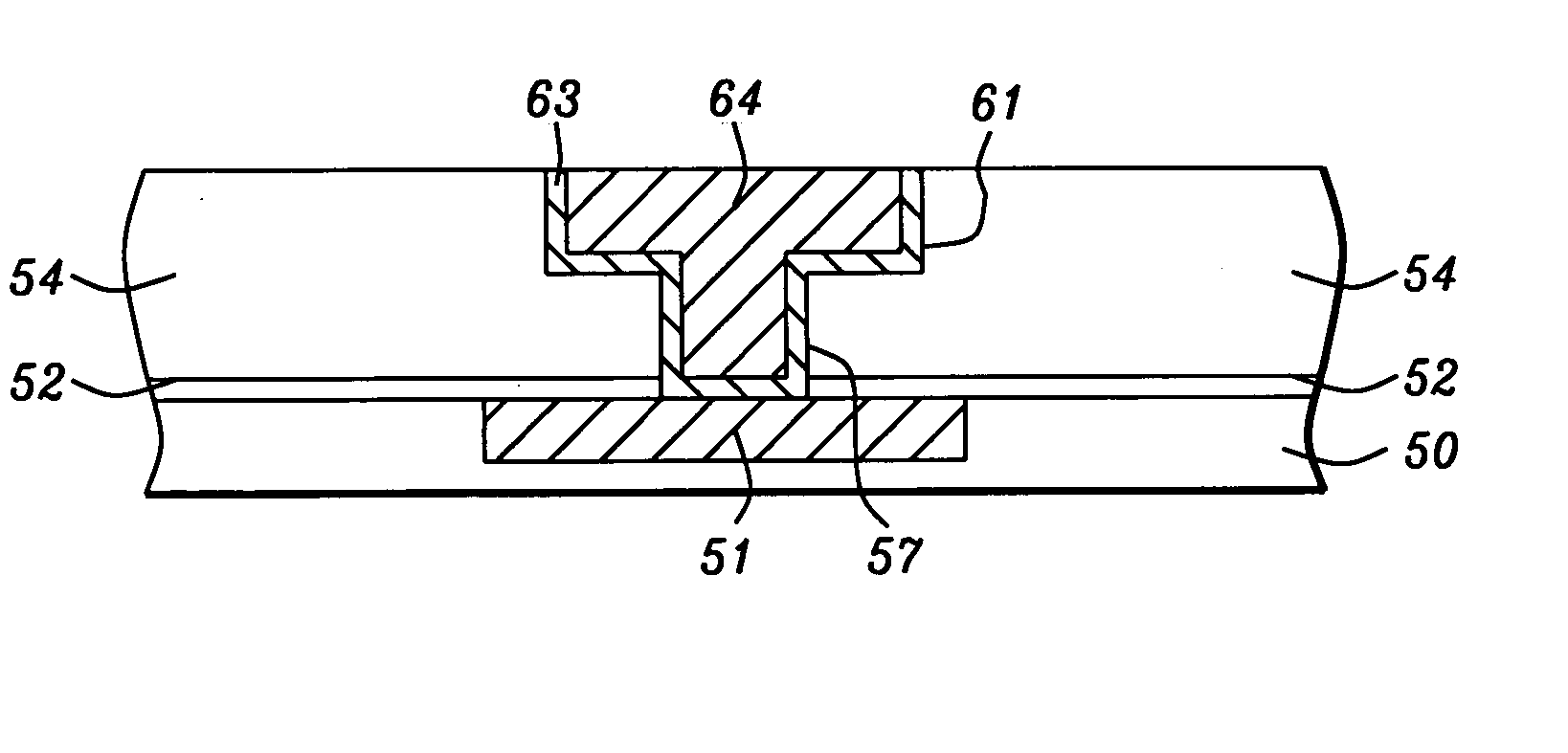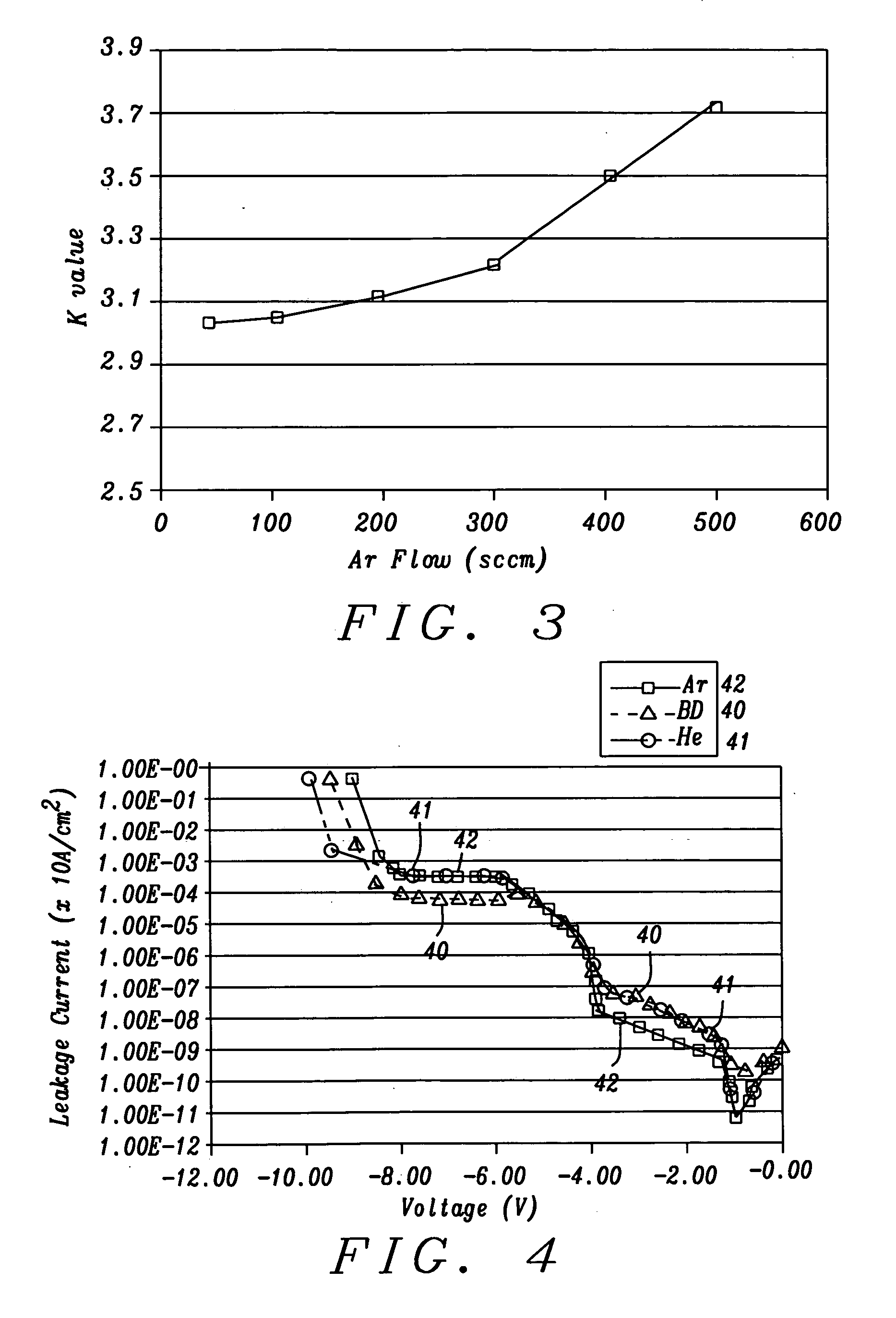Novel method to deposit carbon doped SiO2 films with improved film quality
a carbon doped sio2 film and film quality technology, applied in the field of fabrication integrated circuits and other electronic devices, can solve the problems of reducing device performance, affecting the quality of carbon doped sio2 films, and the cost of deposited low k dielectric layers, so as to reduce the frequency of preventative maintenance cleaning operations in the cvd chamber, the effect of improving the deposition ra
- Summary
- Abstract
- Description
- Claims
- Application Information
AI Technical Summary
Benefits of technology
Problems solved by technology
Method used
Image
Examples
Embodiment Construction
[0022] The invention is a method of depositing a carbon doped SiO2 film as a low k dielectric layer to insulate metal interconnects in a semiconductor device. The drawings are provided by way of example and are not intended to limit the scope of the invention. Moreover, the figures are not necessarily drawn to scale and the relative size of various elements may be different than found in an actual device. Although FIGS. 5-9 depict the use of an interlevel dielectric layer (ILD) in a damascene scheme for fabricating a metal interconnect, those skilled in the art will appreciate that a carbon doped SiO2 layer may also be deposited according to a method of the present invention in a gap fill operation (not shown) to form an intermetal dielectric (IMD) layer between metal lines formed on a substrate.
[0023] It is understood that the deposition method of the present invention may be performed in any chemical vapor deposition (CVD) process chamber to form a carbon doped SiO2 layer and tha...
PUM
| Property | Measurement | Unit |
|---|---|---|
| pressure | aaaaa | aaaaa |
| pressure | aaaaa | aaaaa |
| temperature | aaaaa | aaaaa |
Abstract
Description
Claims
Application Information
 Login to View More
Login to View More - R&D
- Intellectual Property
- Life Sciences
- Materials
- Tech Scout
- Unparalleled Data Quality
- Higher Quality Content
- 60% Fewer Hallucinations
Browse by: Latest US Patents, China's latest patents, Technical Efficacy Thesaurus, Application Domain, Technology Topic, Popular Technical Reports.
© 2025 PatSnap. All rights reserved.Legal|Privacy policy|Modern Slavery Act Transparency Statement|Sitemap|About US| Contact US: help@patsnap.com



